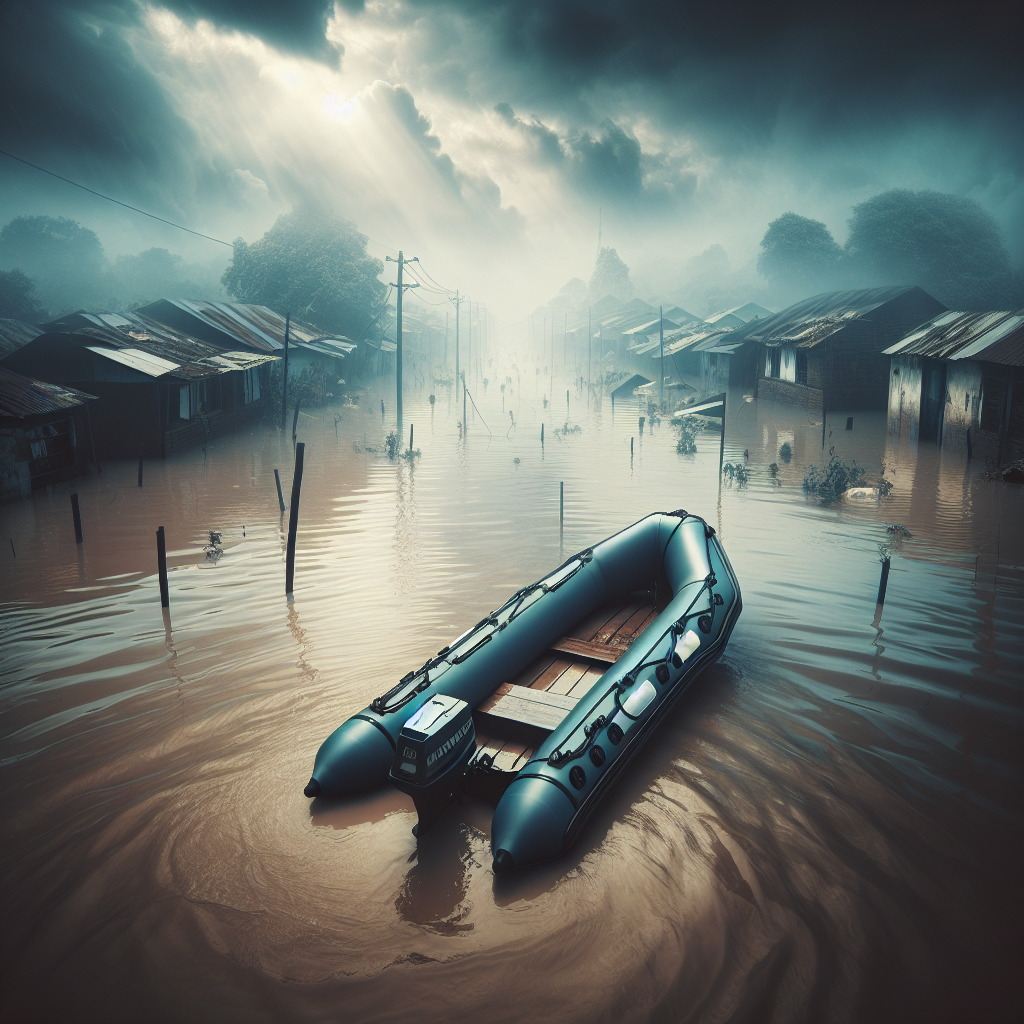Imagine you find yourself in the heart of a sudden flood, surrounded by rushing water and uncertainty. In those terrifying moments, having a clear plan of action can be the difference between life and death. This article will provide you with essential tips and strategies to help you handle the crisis confidently and effectively. From evacuation routes to emergency supplies, we’ll equip you with the knowledge to navigate the treacherous waters of an unexpected flood. So, stay tuned and get ready to ensure your safety and the safety of your loved ones during these challenging times.
Emergency Flood Plans During Flood
Floods are natural disasters that can cause significant damage to both property and human lives. Being prepared for an emergency flood situation is crucial to ensure the safety and well-being of you and your loved ones. This article will provide you with a comprehensive guide on emergency flood plans to help you navigate through this challenging time.
Evacuation Plans
In the event of a flood, it is essential to have a well-defined evacuation plan in place. Identify the safest routes to higher ground and establish meeting points where you and your family can gather. Familiarize yourself with the nearest evacuation centers and shelters in your area. Ensure that everyone in your household knows the evacuation procedures and understands the importance of following them.
Emergency Communication
Communication is key during emergency situations, especially during a flood. Make sure you have multiple means of communication available. These can include cell phones, two-way radios, and landlines. Keep a list of emergency contact numbers, including emergency services, family members, and neighbors. Designate a point person outside the flood zone who can act as a central contact for your family and relay information.
Emergency Supplies and Equipment
Prepare an emergency kit that includes essential supplies and equipment. This kit should include non-perishable food, water, a first aid kit, flashlights, batteries, extra clothing, blankets, and any necessary medications. It is recommended to have enough supplies to sustain your family for at least three days. Additionally, consider including items such as waterproof bags, rope, and tools that may be useful during evacuation or rescue situations.
Emergency Shelters
Identify and familiarize yourself with the emergency shelters available in your community. These shelters are equipped to provide temporary housing, food, and other necessary provisions during a flood. Keep a list of nearby shelters, their addresses, and contact information. If instructed to evacuate, follow the guidance of local authorities and proceed to the designated shelter in a timely and organized manner.
Emergency Medical Care
During a flood, access to medical care can become limited. Ensure you have a well-stocked first aid kit that includes essential items such as bandages, antiseptics, pain relievers, and any necessary prescription medications. It is also important to have a plan in place for individuals with special medical needs. Consider communicating with healthcare providers about emergency protocols and alternate care locations, if needed.
Emergency Transportation
In the event of a flood, roads and transportation systems may become impassable. It is crucial to have a backup plan for transportation, especially if you live in an area prone to flooding. Explore alternative routes to reach higher ground and consider having a designated evacuation vehicle in good working condition. If you do not own a vehicle, make arrangements with friends, family, or local emergency services to ensure transportation is available if needed.

Emergency Power and Utilities
Flooding can disrupt power and utility services, leaving you without electricity, water, or gas. Prepare for such situations by having alternative power sources available, such as portable generators or solar-powered devices. Have spare batteries and charging options for your essential electronics. It is also wise to shut off utilities before evacuating to minimize potential damage and hazards.
Emergency Food and Water
During a flood, access to safe and clean food and water may be compromised. It is crucial to have a sufficient supply of non-perishable food items, such as canned goods, energy bars, and dried fruits. Store an ample amount of clean drinking water in sealed containers. Consider investing in water filtration systems or water purification tablets to ensure a continuous supply of safe drinking water.

Emergency Pet Care
If you have pets, they are part of your family and also require special care during a flood. Prepare a pet emergency kit that includes food, water, medications, identification tags, and any necessary documents. Identify pet-friendly evacuation centers or shelters in your area and make arrangements in advance. It is important to keep your pets safe and secure during the flooding and provide them with the necessary care they need.
Emergency Financial Support
In times of crisis, financial support can be crucial in facilitating recovery and rebuilding efforts. Consider reviewing your insurance policies to ensure proper coverage for flood-related damages. Familiarize yourself with the available financial assistance programs provided by government agencies, non-profit organizations, and community resources. Understanding the financial resources available to you can help alleviate some of the stress and uncertainty during the aftermath of a flood.
Being prepared for a flood is the best way to ensure the safety and security of you and your loved ones. By following the guidelines outlined in this comprehensive article, you can create an effective emergency flood plan that covers all aspects of your needs. Remember, remaining informed, staying connected, and reacting promptly are key elements in successfully navigating through a flood emergency. Stay safe, and don’t forget to reach out to your local authorities for any specific guidance related to your area.








